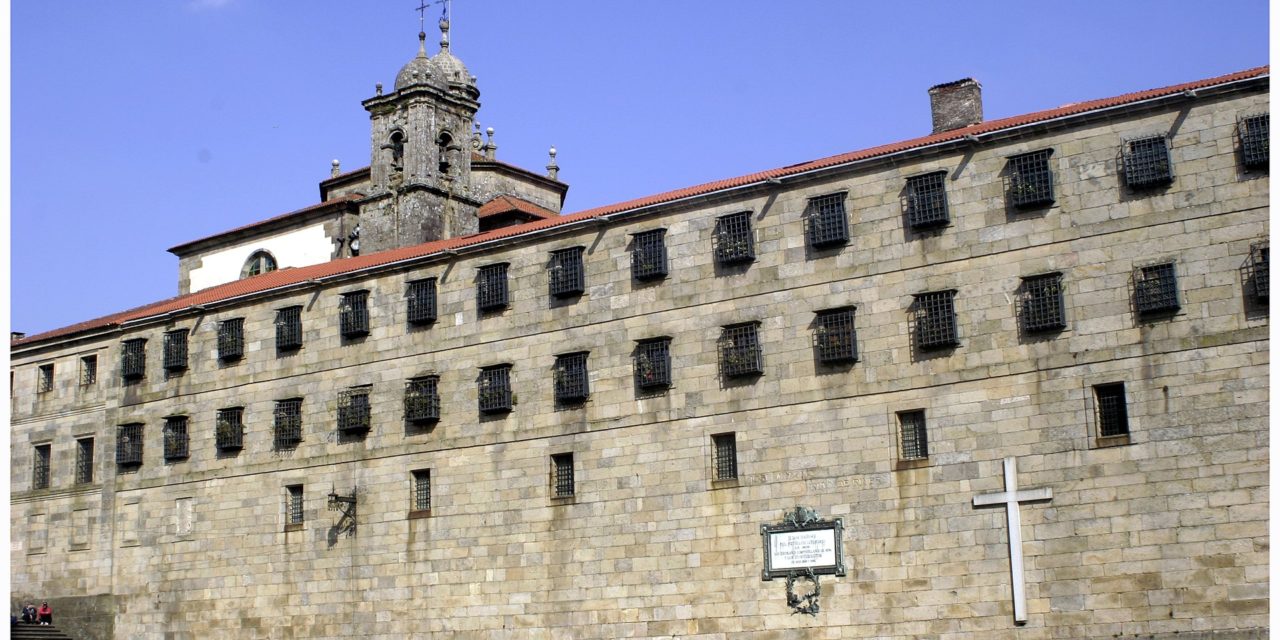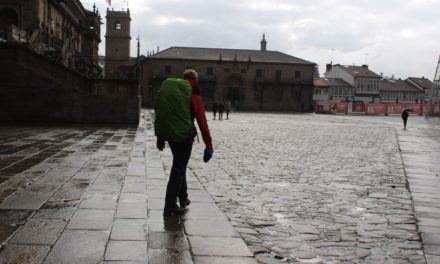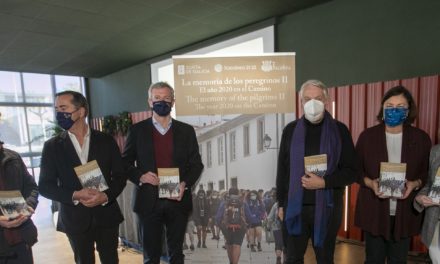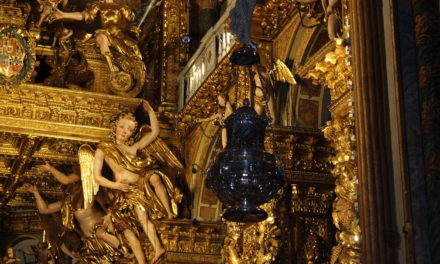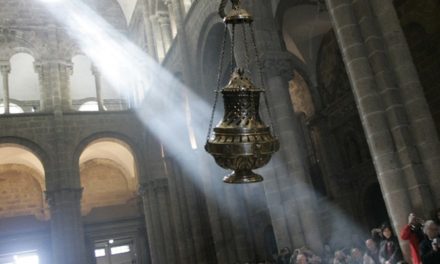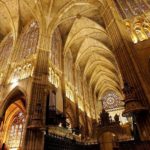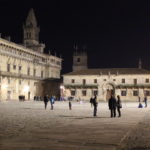Located a few meters from the Cathedral of Santiago, the Benedictine monastery of San Paio is known above all for the magnificent wall that gives onto the Plaza de la Quintana, in front of the Puerta Santa. This extraordinary piece of architecture contains dozens of small windows which open onto the quadrangle, these being the cells of the nuns.
The monastery of is one of the first foundations of the city of Santiago, attributed to Alfonso II and, therefore, dates from the 9th century, a few years after the discovery of the Apostle’s tomb. Shortly after its foundation it adopted San Paio (Pelayo), as owner or patron, a Galician saint from the 10th century, who while still a child was beheaded in Córdoba by the Muslims. A sculpture of the saint still presides over the entrance of his church today.
The monastery was constructed with the nickname of “Antealtares” due to its location with respect to the tomb of Santiago, located “before” him, that is, in its eastern part. Through documents from the time of its foundation, we know that it was originally a Benedictine monastery, being occupied at first by 12 monks. The institution continued to be a male monastery until 1499, the year in which it became a monastery for cloistered Benedictine nuns, which is how it has remained to this day.
As a female Benedictine monastery, it enjoyed its moment of architectural splendour during the Baroque period – in the 17th and 18th centuries – when both its conventual dependencies and its church, were completely renovated. During this time, it became the most important Benedictine female monastery in Galicia, since the nuns were often of noble birth and therefore important donations were given by these nuns, so it enjoyed high economic standing and also had the support of the Crown. The fact that in Antealtares many of the women belonged to the high nobility, meant that they were known in the city not only as “mothers”, but also as “ladies”.
Today it is still a very lively monastery in which its almost 40 mothers actively participate in the liturgy of its church with Gregorian chant, the maintenance of a student residence with 60 places, a hostel that is run according to the Benedictine values of hospitality and a nursery school.
As for its current form, we would draw attention to the great closing wall of the convent buildings that overlooks the Plaza de la Quintana, whose simple beauty made it in the 20th century a building much loved by the avant-garde. In its centre there is a large tombstone with an inscription reminiscent of the “Literary Battalion”, that is, a battalion organized by university students during the fight against Napoleon’s troops.
On the other side of the building, there is the “Puerta de los Carros”. This was the door through which people or merchandise entered the monastery. In the case of San Paio, the door is also known as “Puerta de la Borriquita”, since it is decorated with a relief of the Flight into Egypt of the Holy Family, an episode in which the Virgin is represented sitting on the donkey.
The church, which occupies the northern part of the complex and which is accessed, as we have said, from the top of the stairs in the Plaza de la Quintana, preserves its Baroque architecture and decoration. Along with the façade presided over by the sculpture of San Paio, an extraordinary representation of the child-martyr that once caught the attention of Federico García Lorca, the set of altarpieces inside is outstanding. The 5 extraordinary baroque altarpieces, the organ from the XVIII century and a small Museum of Sacred Art with numerous carvings and liturgical objects, from reliquaries and golden artefacts to the primitive altar that would have accompanied the sarcophagus of the Apostle Santiago, are all worth a visit.
Also, don’t forget to stop by the Puerta de los Carros afterwards and buy at the gate the magnificent sweets of the Benedictine nuns: tea cakes, Santiago cake, almond pastries and various other sweetmeats on request.

